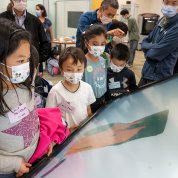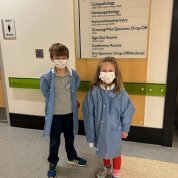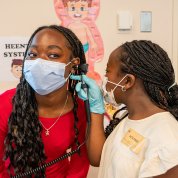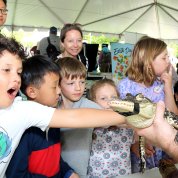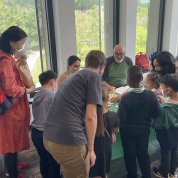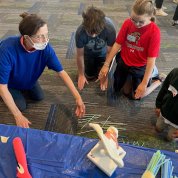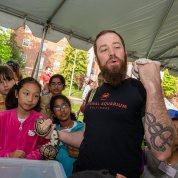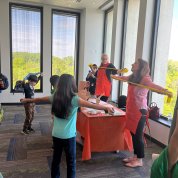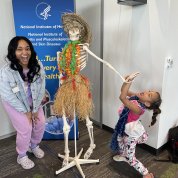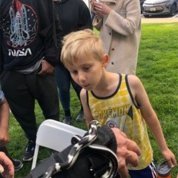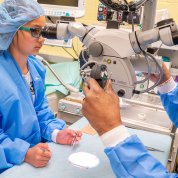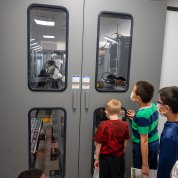‘A Day in the Life’
Take Your Child to Work Day Returns in Person

Photo: Leslie Kossoff
Overheard at NIH recently: “There’s so many stairs here!” “Strawberry DNA looks like snot.” “Can you give my mom a raise?”
For the first time since 2019, children of NIH’ers got to experience the sights and sounds (and yes, many stairs) of the Bethesda campus in person on Apr. 27.
Take Your Child to Work Day (TYCTWD) was held virtually in 2021 and 2022, but this year’s event was hybrid. About 2,500 children were expected on main campus alone, with in-person activities planned at various other NIH sites. In keeping with tradition, the NIH community also held Earth Day activities simultaneously.
Except for 2020’s cancellation due to the pandemic, NIH has observed TYCTWD every year since 1994. This year’s event featured 203 unique activities with a total of 314 sessions—a busy day for all. The more structured limited-registration events were open to youngsters in grades 1-12, but younger children participated in open activities.
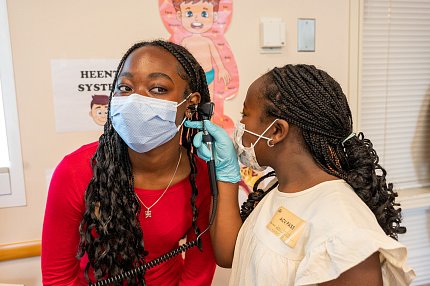
Photo: Leslie Kossoff
Continuing current Clinical Center policy, everyone wore masks while inside Bldg. 10. Child-sized masks—decorated with cartoon monkeys and other characters—are arguably much more fun than the plain versions.
Children got to tour the new Clinical Center pharmacy department in an activity titled “A Day in the Life of NIH Clinical Pharmacists and Pharmacy Technicians.”
Pharmacist Nadia Guirguis led excursions, introducing students to the inpatient and outpatient pharmacies. Participants tested out child-proof caps and pill counters, completed a scavenger hunt and observed several fascinating automated machines that aid the pharmacists and technicians.
The crowd favorite was the XR2 robot, which uses a large mechanical arm to find medications in a complex storage system and delivers them to the machine operator. Kids clustered around the window at the end of the machine to watch the arm at work.
Another popular machine was the NIH Library’s 3-D printer, operated by Library Reference Assistant Charles King.
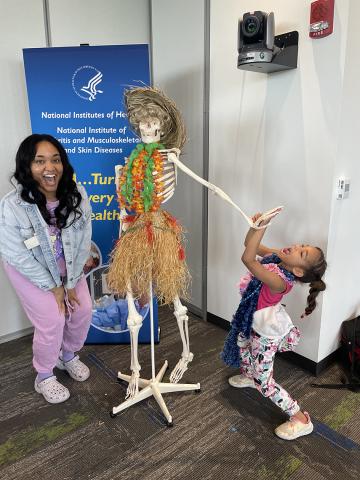
Photo: NIAMS
“We use 3-D printers because scientists may want to have models to use along with their research papers,” he explained to his young audience.
In other areas of campus, kids learned microsurgery techniques (useful for small lab animals such as mice) and robotic surgery (for delicate human operations).
There were plenty of outdoor activities, too. The Earth Day celebration occupied two tents on the Bldg. 1 lawn and had two dedicated food trucks.
Attendees burned off some extra energy by pedaling a bike to charge the battery that powered the Earth Day music speakers. Others participated in a water runoff demonstration using spray bottles (with great enthusiasm) to “rain” on a topographic map. Several local wildlife societies brought animals, such as a Gila monster, a tarantula, a ball python and other snakes. Kids also took guided tours of the NIH stream and met with the NICHD Green Team composting crew and their mascot, Jeremy Wormy. The ever-popular sapling giveaway was also back, offering Norway spruce and Northern red oak trees. Other goodies came from the FAES Science Fair: bags and t-shirts in addition to slime and cotton candy, and kids could spin a prize wheel at the Earth Day tent to win an assortment of NIH-inspired merchandise.
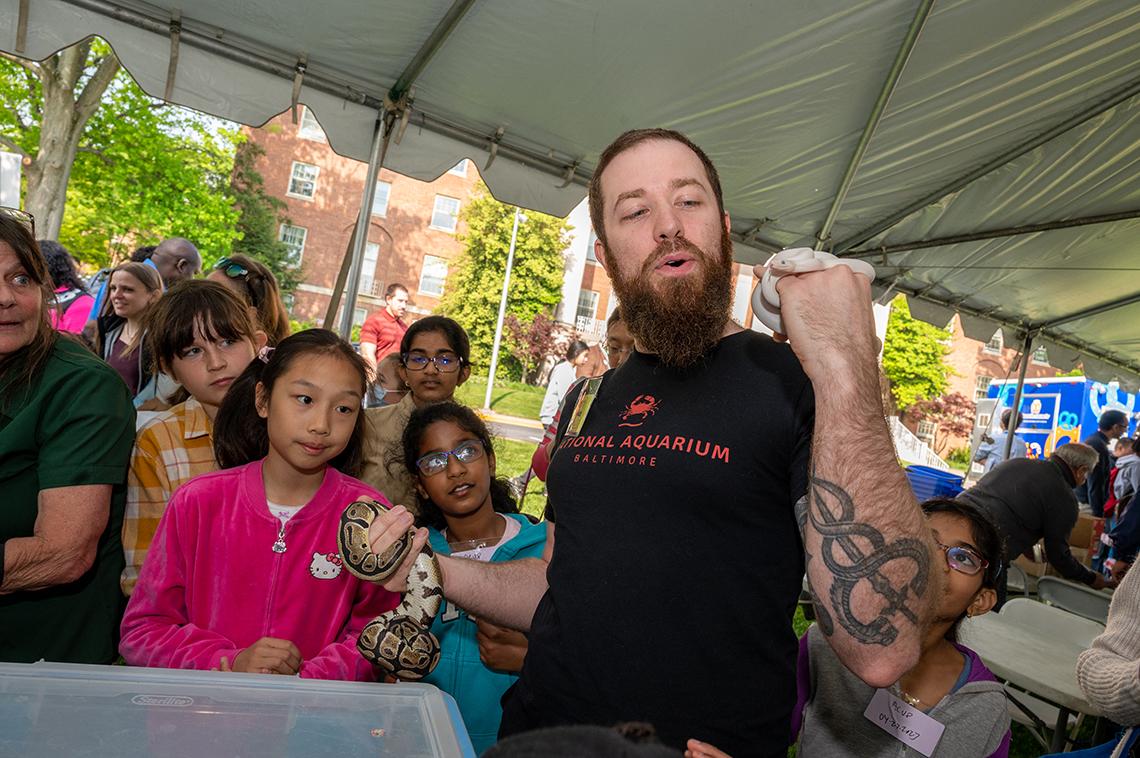
Photo: Leslie Kossoff
Hopefully, the event’s main takeaway for the young learners was that science and sustainability are exciting and rewarding jobs. Session leaders reinforced this message throughout the day.
“This is a good example of what it’s like to work in a lab, because you’re working as a team to complete this activity,” said instructor Dr. Lataisia Jones of NINDS in the much-loved DNA Extraction from Strawberries event. Students peppered her with questions about the many uses for DNA extraction.
“I want you all to study these questions in your own labs,” she encouraged.
As the children made their way around campus, yellow roadside signs cautioned drivers: “Be Alert—Future NIH’ers Walking.”
Most current campus denizens shared the same sentiment: We hope to see many of these young faces back for future TYCTWDs—or as employees!

Photo: Leslie Kossoff

